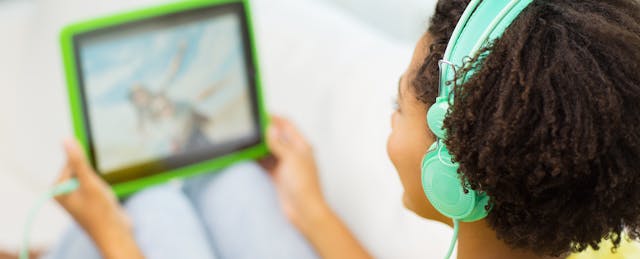In my most recent school role, I was tasked with leading our school’s transition to personalized learning. Our staff saw incredible potential in using technology in thoughtful ways to meet the needs of every student. We installed carts, purchased softwares, held numerous professional development sessions, and even hired consultants to help—all with the intent of serving the individual, diverse needs of each and every student.
We focused a lot on helping students work at their own pace and access content at the appropriate level. (For example, one student might read an article at a 4th grade level and another would read the same article at an 8th grade level). We saw growth in NWEA scores, but in all honesty, the gains haven’t really stuck year over year. And we’re still far from the accelerated growth needed to close achievement gaps.
On reflection, I wonder if we spent our time and energy personalizing the wrong things. We focused on pacing and content, but not on each student’s individual learning skills (and all the differences among them). I now see that personalized learning environments require personalized learning strategies. And playlists alone don’t get us there.
The Playlist Cycle of Doom
In 2015, our school was selected to join the first cohort of a personalized learning program that involved a web-based technology platform, curricula, digital assessments and extended training. A foundation of the program had students learn the content (facts, definitions, procedures) largely on their own. Students work through an online set of activities—called a playlist—for each topic. They then take a quiz to demonstrate mastery. Ideally, this is done with little adult support. That way, teachers can spend more time working with students on application of content and projects.
As I observed classrooms, I noticed a significant portion of students go through a disturbing cycle: do the playlist, take the assessment, fail it. Do the playlist (again), take the assessment (again), fail it (again). Do the playlist (yep, one more time), take the assessment (uh huh), fail it (surprise, surprise). It’s a frustrating experience, especially for struggling students.
I remember asking a group of students to write down what they might do differently next time to pass the assessment. Here are some of the responses I got back:
- “Try harder.”
- “idk”
- “My teacher told me to do the playlist, so that’s what I’m doing.”
We built endless playlists (or relied on pre-made ones) to let students work on lessons at their level and at their own pace. But we didn’t help them figure out what to do if their approach didn’t work. What learning strategies are working best? How do you come up with new ones when you struggle? This is a missing link in many personalized learning classrooms, especially embedded in everyday learning.
The Power of Personalizing Strategies
Recently, I visited a 2nd grade classroom where the teacher integrated weekly reflection on nonfiction reading. Students tracked their own comprehension scores for the week, and wrote a short reflection on the strategies that worked best and new ones they might try. On the wall, there was a student-created poster of reading strategies they had developed as a class.
Here are some examples of what real 2nd graders wrote (typos and all!):
- “I will use headings next week so I know what diffrent parts of the story are about.”
- “I would want to use pictures clues again. In the future I want to use capshons.”
- “I want to stay focused and another thing I want to tryout is reading it 2 times.”
These students could see that reading wasn’t magic—there are specific actions they could take to get better. And the most effective action might be different for each student. Weekly self-tracking and reflection allowed them to personalize their own learning strategies.
The best part of my visit was in a conversation with the teacher afterwards. She shared that the original list of strategies was a lot shorter at the beginning of the year. But when students struggled, the class was pushed to come up with new strategies—tailored specifically to each of their classmate’s needs and gaps. This is what effective personalization is all about.
The Bigger Impact
Last summer, I left my school to build a student-led reflection tool that supports this philosophy of personalized learning strategies. I’ve since immersed myself in the research and see exciting connections to powerful, broader impacts.
Carol Dweck, the pioneer researcher on growth mindset, recently expressed concern that her work is mislabeled as “work hard, get better.” In a recent interview, she said it takes more than hard work alone; learners need to find and use effective strategies to improve. Instead of creating the playlist cycle of doom, we need to work toward personalized learning strategies. Only then will students see their actions and effort lead to improvement—a foundational step to embody growth mindset.
Further, we know that learning new skills is critical in our ever-changing economy. We are doing students a disservice if we don’t teach them how to reflect on their performance and come up with new approaches when they struggle. Initially, they’ll need scaffolds like the 2nd grade poster on the wall. But with practice and feedback, they become more self-sufficient and creative in how they learn. Ultimately, we can create better, more confident, lifelong learners. Isn’t that what we’re all hoping for?


